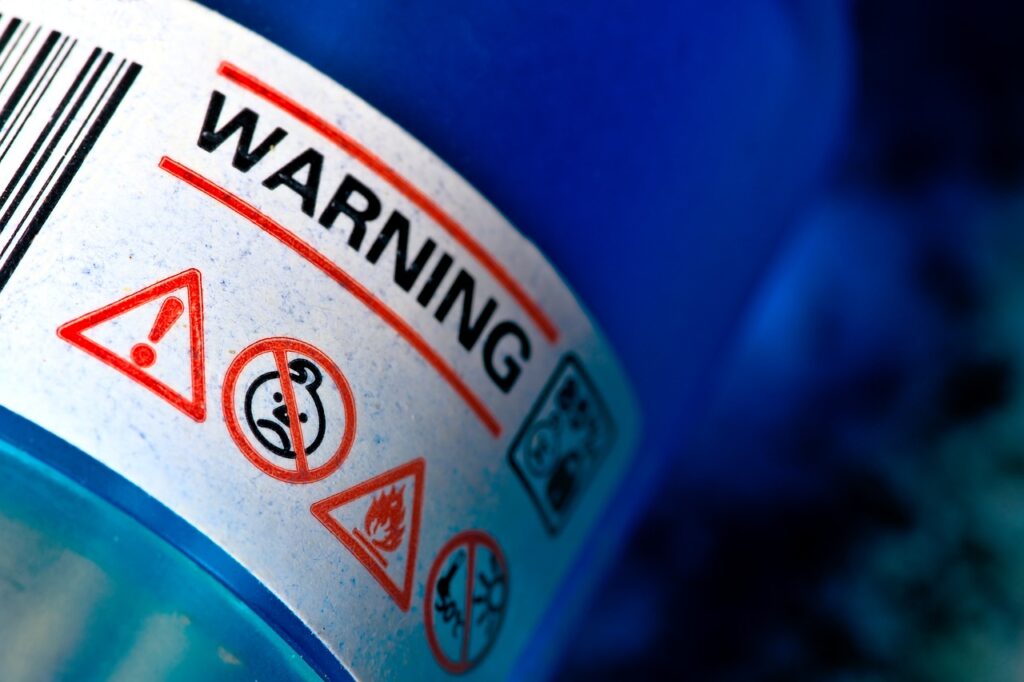Our product liability lawyers in McAllen, Texas, can get you the compensation you deserve. You pay no fees until we win.
Hear from Our Satisfied Clients
Choose the Best Defective Product Lawyer in McAllen for Your Case
After spending over 20 years serving as a U.S. Army Combat Medic and treating injured victims as a chiropractor, Law Ninja Dr. Louis Patino — or Doc, as his clients call him — started his personal injury practice.
Doc and his team are dedicated to helping McAllen residents with severe injuries get the compensation they’re entitled to in a defective product claim.
You can find us at 1802 N 10th St, McAllen, TX 78501. Book a free consultation online by calling 855-LAW-NINJA or send us a confidential message on our contact page. If you’re unable to visit us, we can also come to you.
Your case review is always free, and if you have a claim, you won’t pay us anything until we successfully settle your case.
Can You Sue for Product Liability?
Under the Texas Product Liability Act, a strict product liability law, manufacturers are responsible for any harm their products cause — regardless of whether they were negligent, careless, or otherwise at fault. If a defective product has caused a severe illness or injury, you may be able to file a lawsuit to pursue compensation.
While you don’t have to satisfy the difficult burden of proof that a manufacturer was willfully negligent to successfully sue for product liability, you must prove several elements, such as if:
- The product was defective
- The product defect was “unreasonably dangerous”
- The defect caused an injury while you were using the product as intended, and you haven’t substantially altered the product in a way that could have caused the defect.
You may also be able to file a product liability claim if you have evidence that the manufacturer was negligent and that this led to the product being defective, which caused your injuries, or if they breached an implied or explicit warranty.
What Injuries Can a McAllen Product Liability Attorney Help You Claim For?
Our personal injury law firm specializes in catastrophic injuries and death caused by product defects.
A catastrophic injury is a serious injury that has life-changing consequences. People with catastrophic injuries often need substantial medical treatment — sometimes for the rest of their lives — and experience a significant loss of income potential. In some cases, they may not be able to work again.
Examples of catastrophic injuries include the following:
- Spinal cord injuries that cause partial or full paralysis.
- Traumatic brain injuries.
- Other injuries that cause ongoing and permanent neurological problems.
- Limb amputation (such as hand, foot, arm, and leg).
A product liability claim for an accident resulting in catastrophic injuries or wrongful death can yield significant compensation. For example, if you’re a painter and lose your dominant hand in an accident caused by faulty equipment, you may never be able to paint again.
Our product liability attorneys can ensure you secure a settlement that appropriately compensates you for your losses, which might result in a six-figure settlement or more.

How Can a McAllen Product Liability Lawyer Help?
Our product liability lawyers in McAllen can investigate your situation, determine if a company is liable for your injuries, and gather the vital evidence you need to prove the product was defective.
Our product liability attorneys can also help you receive the maximum payout from your claim, including compensation for medical expenses, lost wages and earning capacity, physical pain, and mental anguish.
What Are the Three Types of Product Defects?
A product can be defective in many ways, but defects typically fall into one of the following three categories:
- Design defects
- Manufacturing defects
- Warning defects (also known as failure to warn defects).
Design Defects
Design defects happen when there is a fundamental flaw in the intended design of the product. This type of defect is hazardous because it typically affects the entire manufacturing run.
Some examples of design defects include the following:
- A metal fan guard with an unreasonably large gap that allows fingers to come in contact with the blades.
- A large saw without implements to protect the user.
- An imbalance in a car that makes it top-heavy and more prone to flipping over when a driver turns a corner.
Claiming product liability compensation for a design defect comes with an additional burden of proof. You must show that there was an alternative, safer design and that it was feasible for the manufacturer to design the product in this way.
Manufacturing Defects
Manufacturing defects are usually the result of an error in the creation or assembly process. If products are handmade or part of a small manufacturing run, there might only be a small number of items affected. However, in today’s world of mass production, a manufacturing defect could impact whole batches and, therefore, thousands — if not millions — of consumers.
Examples of manufacturing defects include things such as:
- A problem during the packaging process of a sterile drug that leads to contamination
- Using the wrong type of screws or bolts when assembling a product
- Incorrectly installing electric circuitry, leading to electrical shocks.
Warning Defects
The final category of defects is a failure to warn, and it applies when a product doesn’t come with appropriate warning labels and instructions.
Some products, such as medications, power tools, and machinery, are not inherently safe. Even if there isn’t a design defect in the mower you use to trim your lawn or the flat iron you use to straighten your hair, there is still a risk of harm. Because of this, the product should come with a warning label and instructions for use. If they do not and you’re injured while using the product, you could be entitled to compensation.
Common Product Liability Cases in McAllen
We know it can be intimidating to take action against the party responsible for your injury. However, our defective product lawyers are unafraid to fight for the justice you deserve if any of the following has hurt you:
- Pharmaceuticals
Medication can suffer a defect during the packaging process, but it can also be defective in other ways. Many drugs are approved by the U.S. Food and Drug Administration but are later found to be dangerous, including birth control, acid reflux drugs, and antidepressants.
- Defective household appliances.
- Defective equipment
DIY hobbyists and construction workers alike may come into contact with defective equipment, such as saws, fans, drills, nails, heat, or glue guns, angle grinders, and sanders. These all have the potential to cause catastrophic injuries, including amputations and skin burns.
- Toxic food products and containers.
- Dangerous childcare products and toys
Children’s toys are also commonly defective. Smaller toys may be made incorrectly and could pose a choking hazard, while large items may have a design defect that makes them prone to falling over and trapping children. If your child got hurt due to a product defect, our McAllen personal injury lawyers can help.
- Defective vehicles
Defective vehicles and auto parts are common, and they can cause life-changing injuries or even wrongful death. If you believe a defect has caused your injury, you could be entitled to product liability compensation. Common examples of auto defects include defective brakes, seat belts, tires, and airbags.

What Compensation Can a Product Liability Lawyer in McAllen Secure?
How much compensation you can recover in a product liability claim depends on the losses you’ve incurred as a result of your injuries.
While it’s difficult to predict exactly how much you might receive without knowing the specifics of your case, you can get a ballpark figure by using our personal injury calculator. Injuries impact everyone in unique ways, but your damages will most likely comprise the following:
- Medical expenses: These include hospitalization, surgery, transport to and from the hospital, prescription medicine, and rehabilitation, such as physical therapy and assistive devices or modifications to your home to help you be more independent. You can recover both past and future expenses.
- Lost wages and future income: If you are unable to work — whether for months, years or ever again — you can recover your lost income. This also covers future income potential, such as if you sustain a spinal cord injury resulting in paralysis.
- Property damage: If you are in a car, truck, or motorcycle accident caused by a defect, you may have substantial damage to your vehicle. You can recover the costs of repair or replacement in your claim.
- Emotional distress: Catastrophic injuries from product defects can have a substantial emotional impact. You might experience depression, post-traumatic stress disorder (PTSD), or anxiety after your accident.
- Loss of consortium or companionship: You are also entitled to damages if your loved one has died as a result of a product defect or if your relationship with your spouse or parent has changed because of their injuries.
Some damages — such as medical bills and lost wages — are much easier to prove than others. Our experienced McAllen product liability lawyers will work with experts, gather evidence, and negotiate with insurance companies to ensure you get the maximum possible award.
Product Liability Claims FAQs
A defective product is one that’s potentially dangerous when used as intended. This could be due to a flaw or error in its:
- Design
- Manufacturing
- Labeling or warning.
A defective product can be one that fails to perform safely when used as a consumer would expect or that poses risks that aren’t adequately warned against on the labeling or packaging. These defects can result in serious injuries or even death to consumers.
If a defective product has injured you or someone you know, it’s essential to speak to a McAllen accident attorney as soon as possible. They will help you with every step of the process to ensure you receive compensation.
In Texas, the statute of limitations for filing a product liability claim is generally two years from the date of the injury. This means that an injured party has two years from the date the defective product injured them to file a lawsuit. It’s crucial to act quickly, as failing to file within this time may mean you won’t receive compensation for your injuries.
In Texas, the statute of limitations for filing a product liability claim is generally two years from the date of the injury. This means that an injured party has two years from the date the defective product injured them to file a lawsuit. It’s crucial to act quickly, as failing to file within this time may mean you won’t receive compensation for your inj
Liability for a defective product can fall on various parties involved in the product’s distribution chain, such as:
- The product’s manufacturer
- The manufacturer of component parts
- The wholesaler
- The retail store that sold the product to the consumer.
In some cases, other parties involved in the distribution of the product can also be held liable. The key is to identify who was responsible for the defect that caused the injury to establish liability. It’s vital to seek the help of a product liability lawyer, who will guide you through the process, collect any evidence that’s required, and ensure you receive the compensation you deserve.
uries.
Selling a defective product that poses a risk of injury or harm to consumers is generally considered illegal. Various consumer protection laws, such as those enforced by the U.S. Consumer Product Safety Commission (CPSC), prohibit the sale of dangerous or defective products.
Sellers, manufacturers, and distributors have a legal obligation to ensure the products they offer to consumers are safe for use as intended. If they knowingly sell a defective product that poses a risk of serious injury, they may be held liable for any resulting harm and face significant legal consequences.
In a defective product lawsuit, potential defendants can include:
- The manufacturer of the product
- The manufacturer of component parts
- The company that assembled or installed the product
- The wholesaler and the retailer that sold the product to the end consumer.
In some cases, other parties in the chain of distribution may also be held accountable. It depends on where in the product’s chain the defect originated and who had a duty to ensure the product’s safety. A personal injury attorney will be able to help you determine liability and guide you through the process to make sure you are compensated for any harm the defective product has caused.
To have a valid product liability claim, generally, you must be able to prove that the product was defective, that you used the product as it was intended, and that you suffered injuries as a direct result of the product’s defect. It is also important to show that you have suffered actual damages, such as medical bills, lost wages, or pain and suffering due to the defective product. Consulting with an experienced product liability attorney can help you assess the strength of your claim and guide you through the legal process.
If a defective product injures you, it is important to take several steps to protect your rights. First, seek medical attention immediately and follow your healthcare provider’s advice. Keep the product and any packaging, instructions, or warnings that came with it, as these may serve as crucial evidence. Document the incident in detail, including how you used the product and how the injury occurred. Take photographs of your injuries and the product. Keep records of all medical treatment and expenses related to the injury. Finally, consult with a qualified product liability attorney as soon as possible to discuss your legal options and to ensure that your claim is filed within the applicable statute of limitations.
Locations We Serve
Our Texas accident attorney has successfully recovered maximum compensation for injured individuals and their families all over the state, from the Rio Grande Valley to the Permian Basin.






